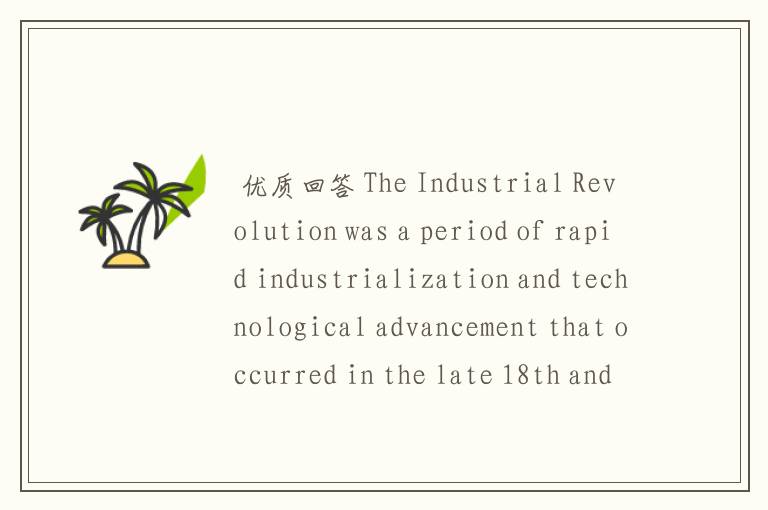- 1、
本文提供多篇内容参考,可直接点击跳转详细解答
(一)

优质回答The Industrial Revolution was a period of rapid industrialization and technological advancement that occurred in the late 18th and early 19th centuries. It began in Britain and then spread to other parts of Europe and the United States.One of the main factors that contributed to the Industrial Revolution was the development of new technologies and inventions. The invention of the steam engine by James Watt in 1769 was a major breakthrough that revolutionized transportation and manufacturing. It allowed for the mechanization of factories and the development of steam-powered trains, ships, and machinery.Another factor that contributed to the Industrial Revolution was the availability of natural resources. Britain, for example, had abundant supplies of coal and iron ore, which were essential for powering steam engines and building machinery. The discovery of new sources of raw materials, such as cotton and rubber, also played a role in driving industrialization.The expansion of trade and the development of a global market also played a significant role in the Industrial Revolution. The growth of colonial empires and the establishment of trade routes allowed for the exchange of goods and ideas between different parts of the world. This led to the development of new industries and the spread of industrialization.The Industrial Revolution also had social and economic impacts. It led to the growth of cities and the migration of people from rural areas to urban centers in search of work. This resulted in overcrowding, poor living conditions, and the rise of social problems such as poverty and inequality. However, it also led to the creation of new jobs and the growth of the middle class.Overall, the Industrial Revolution was a transformative period in human history. It revolutionized the way goods were produced and consumed, and it laid the foundation for modern industrial societies. It also had profound social, economic, and environmental impacts that continue to be felt today.
阅读完本文《茶的分类品种及特点》,您是否对有了更深层次的认识呢?请继续关注www.entea.com.cn,获取更多的精彩内容。
转载请注明来自,本文标题:茶的分类品种及特点
本文地址:https://www.entea.com.cn/cyjk/6410.html
